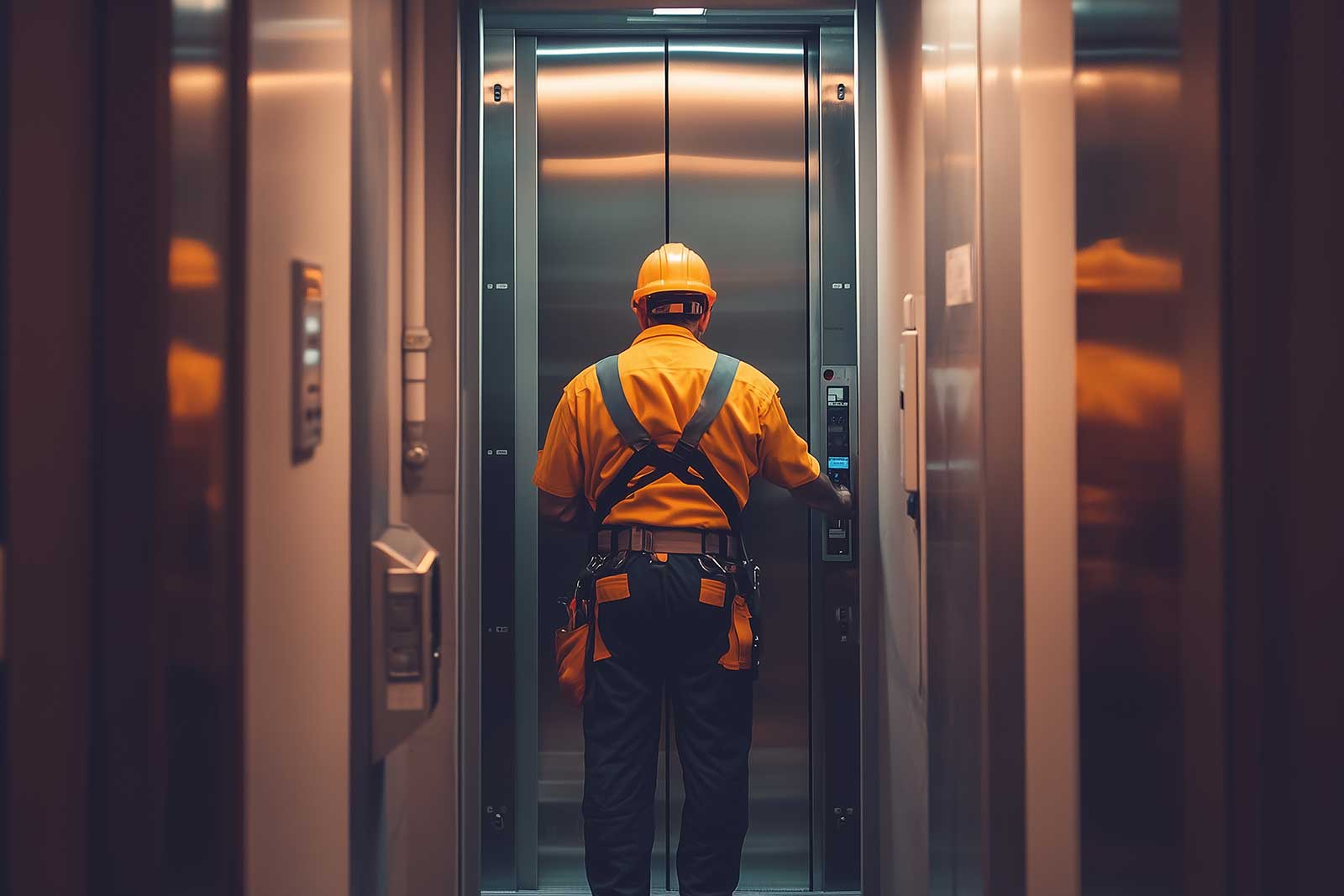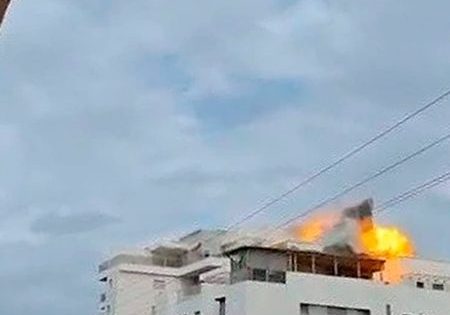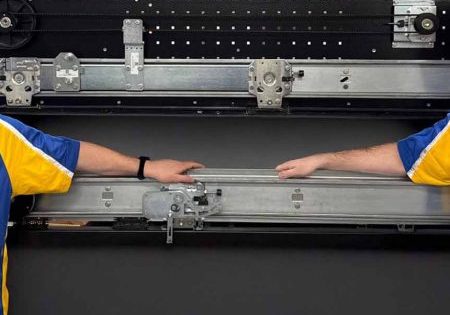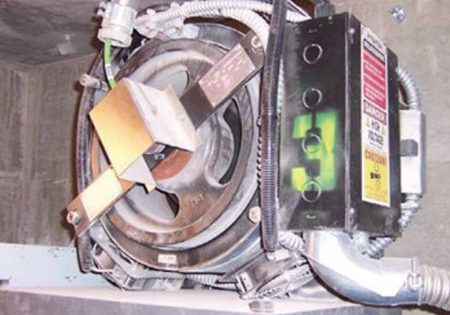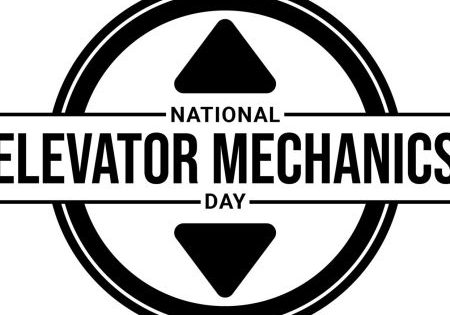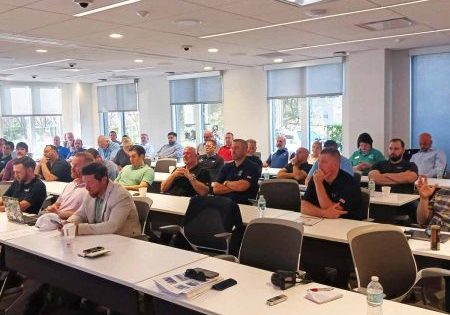How the elevator industry is taking a holistic approach to horizontal door system safety through critical code changes
Nearly 20 years ago, the American Society of Mechanical Engineers (ASME)/Canadian Standards Association (CSA) harmonized code ASME A17.1/CSA B44 became the accepted guide throughout the U.S. and Canada for the design, construction, installation, operation, inspection, testing, maintenance, alteration and repair of elevators, escalators and related conveyances. The code is updated every three years to ensure that the requirements represent the latest safety and technology available, and one of the most notable recent changes involved ASME A17.1-2019/CSA B44:19 Requirement 2.13 – Power Operation of Hoistway Doors and Car Doors.
The change was based on a comprehensive Hazard Assessment and detailed study of passengers approaching, entering and exiting elevators equipped with horizontal doors. The detailed analysis deemed it necessary to develop new requirements for door reopening devices. Specifically, it was clear that there needs to be improved detection of approaching passengers, as well as detection of passengers in the door path. The typical speed and paths of motion of approaching passengers were used as inputs in the development of the updated code requirements.
When developing the new requirements, it was important to evaluate the available detection means technology to ensure that any requirements advocated were practical and achievable. To this end, it was necessary to review the suitability and reliability of various technologies currently available in the marketplace. Technologies such as infrared detection are well established for sensing passengers directly in the path of motion of the doors, and infrared detection is also employed for the detection of approaching passengers. In addition, the application of radar technology has also emerged as a viable means for the detection of approaching passengers and objects as no viable technology is meant to be excluded on the new code. To assist elevator designers in verifying the effectiveness of any chosen detection means, specific targets only applicable to the elevator design process were specified in the code.
The revised code requirements also recognized that the availability of elevators is imperative for the vertical transportation of occupants and visitors in buildings. The analysis recognized that the approaching objects detection means could be unintentionally actuated by people walking past the elevators or congregating close to a given elevator without intending to board. This could indefinitely delay the elevator and disrupt the traffic-handling capability of the building transportation system. To address this situation, a provision for rendering the approaching object detection means inoperative after a suitable dwell time was included in the code.
So, what is included in Requirement 2.13.5 Reopening Device(s) for Power-Operated Horizontally Sliding Doors and Gates? Let’s examine further.
2.13.5.1
Specifies where reopening devices are required and defines their function.
Requirement 2.13.5.1 establishes the conditions under which reversal of door motion is to occur and the minimum reopening distance at which this is to take effect. This requirement pertains to the detection means of approaching objects which is generally a three-dimensional protection means. It also includes the detection means of objects in the door path which is generally a two-dimensional car door/gate mounted protection means. This requirement provides a practical and measurable time limitation to sense and respond to a door close malfunction.
2.13.5.2
Pertains to the conditions under which the approaching object door detection system and the door path detection means is permitted to be rendered inoperative.
Requirement 2.13.5.2 applies to rendering the door detection means inoperative under the following conditions:
- When the door Kinetic Energy (KE) has been reduced. This allows the doors to be moved at reduced speed if impeded for more than 20 s, which constitutes a dwell time consistent with Americans with Disabilities Accessibility Guidelines and ANSI/ICC A117.1 requirements.
- For approaching objects when the doors approach a particular position to prevent excessive delay of elevator service
- When the approaching objects detection means has delayed the elevator for at least 20 s without anyone entering or exiting the elevator, the detection means is permitted to be rendered inoperative. The 20-s delay is consistent with ADAAG and ANSI/ICC A117.1 requirements.
- When doors are within 20 mm of the door jamb or opposing door edge, the detection means is permitted to be rendered inoperative in order to allow door closure without actuating the detector. The 20-mm gap is sufficiently small so as to avoid accidental hand entrapment.
This requirement allows the door detection means to be rendered inoperative after 20 s if Phase I recall is not provided and the detection means can be affected by smoke or flames. The 20-s delay is consistent with ADAAG and ANSI/ICC A117.1 requirements. This establishes priority of building fire operations to ensure that fire integrity remains intact. This also requires and specifies an audible alarm if the detection means is rendered inoperative to warn passengers of impending door closure when kinetic energy is reduced and detection means are non-functional.
2.13.5.3
Detection of approaching objects
This requirement provides the geometry and dimensions as well as surface finish of targets to be used by designers for the verification of approaching object detection means. It also specifies the location and speed of the targets that must be detected when moving towards the doors.
The detection means is intended to sense a person or object approaching an elevator from the landing and reduce the likelihood of their being struck by the doors. The locations of the points of verification were chosen based on the results of analysis and hazard assessment. It is understood that advanced detection prior to the leading edge in the plane of the hoistway door may occur, but after the leading edge has passed, the hazard is eliminated.
Traditional detection means, mounted on the car door, remain in operation. It is recognized that incidental contact may still occur. However, the incidence of these events will be significantly reduced.
2.13.5.4
Detection of objects in the door path
This requirement provides the geometry and dimensions as well as surface finish of targets to be used by designers for the verification of the effectiveness of the detection means for objects in the door path. It also defines the location of the target. These are design requirements, not on-site test requirements, intended to reduce the likelihood of a body part being struck by or entrapped by the elevator doors. Targets are based on the following:
- ANSI A156.10 – 2005, SDO: BHMA, Section 8.1.2 Motion Sensors
- Average walking speed for adult, per “Establishing Pedestrian Walking Speeds” authored by Nick Carey at Portland State University, submitted on May 31, 2005
- Anthropometric data for adults and children contained in A17.7/B44-7 and “The Measure of Man and Woman, Human Factors in Design,” Alvin R. Tilley, Henry Dreyfuss Associates, Copyright 2002 by John Wiley & Sons, New York
- People approaching elevator, clothed in attire ranging from black non-reflective to white reflective material as approximated by colors defined in mil spec FED-STD-595C
2.13.5.5
Self-monitoring of detection means
The detection means functionality is required to be self-monitoring. If it is nonoperational, the door system is required to operate at reduced kinetic energy. These are design requirements intended to determine whether the detection means is operational prior to the start of the next “door close” command, regardless of whether single or multiple devices are utilized. This is a positive way of ensuring that both door path detection and approaching object detection means remain operational.
2.13.5.6
Maintenance and onsite testing of detection means
The maintenance and testing methods for the detection means are required to be included in the Maintenance Control Program in order to ensure ongoing functionality of the detection means.
To learn more about elevator codes and safety, go to neii.org.
Get more of Elevator World. Sign up for our free e-newsletter.
